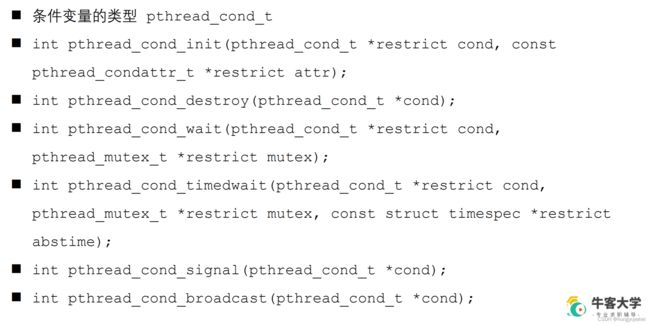【项目 线程4】3.12生产者消费者模型 3.13条件变量 3.14信号量 C++实现生产者消费者模型
3.12生产者消费者模型
生产者消费者模型中的对象:
1、生产者
2、消费者
3、容器
若容器已满,生产者阻塞在这,通知消费者去消费;若容器已空,则消费者阻塞,通知生产者去生产。生产者可以有多个,消费者也可以有多个。容器中的数据是多个线程共享的,线程同步问题涉及到互斥量、读写锁等。
条件变量、信号量等。
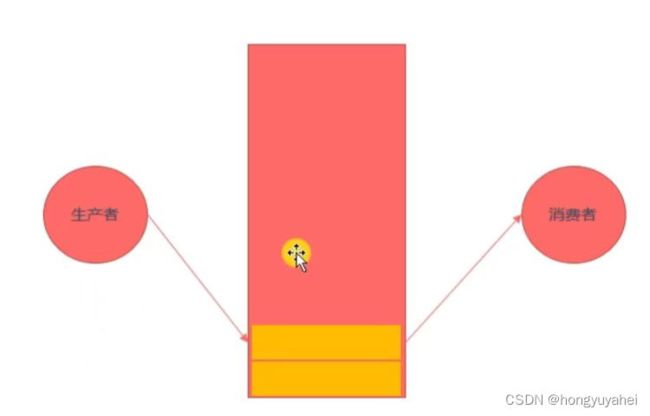
/*
生产者消费者模型(粗略的版本),此处不考虑容器存满
*/
#include 显示结果:
 后续课程解决当前生产者消费者模型所存在的问题!互斥量、条件变量、信号量
后续课程解决当前生产者消费者模型所存在的问题!互斥量、条件变量、信号量
3.13条件变量

条件变量,某个条件满足后引起阻塞或某个条件满足后解除阻塞。配合互斥锁实现线程同步。
#include 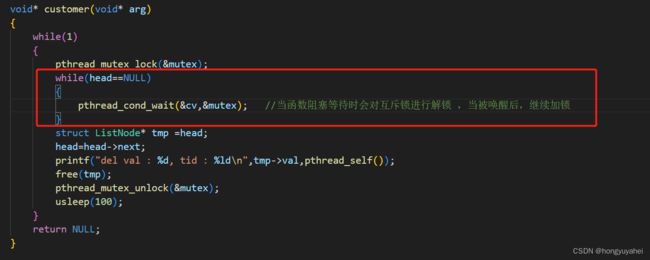 说明:
说明:
1、消费线程进来,拿到互斥锁。
2、如果内容为空,则阻塞,同时释放互斥锁(这就完成了拿去和释放动作),无论有几个消费线程抢到锁,都会阻塞在这里。
3、生产线程抢到锁,于是生产。只要生产了就会通知消费线程。同时下一步解除锁。
4、!!!!== wait解除阻塞,但是同时也重新拿到了锁!!!==很重要!!!
5、此时再次评估条件,满足条件,拿着锁向下执行
void* costom(void* arg){
while(1){
pthread_mutex_lock(&mutex);
struct Node* tmp = head;
if(head != NULL) {
head = head->next;
printf("delete node ,num : %d,tid:%ld\n",tmp->num,pthread_self());
free(tmp);
pthread_mutex_unlock(&mutex);
usleep(100);
}else{
//没有数据 需要等待
// // 当这个函数调用阻塞的时候,会对互斥锁进行解锁,当不阻塞的,继续向下执行,会重新加锁。
pthread_cond_wait(&cond,&mutex);
//!!!!!!!!!!所以这一步必不可少
pthread_mutex_unlock(&mutex);
//收到信号,回到这里,生产者一释放锁,wait就重新拿到锁。但拿到锁以后,出else,到while入口还有一步拿锁,此时的lock无法执行,就会阻塞在那里。所以一定要在wait后面释放锁。
}
}
return NULL;
}
3.14信号量(semaphore)
信号量,信号灯,灯亮则表示资源可用,灯灭则表示资源不可用。信号量主要用于阻塞线程,但不保证线程安全。

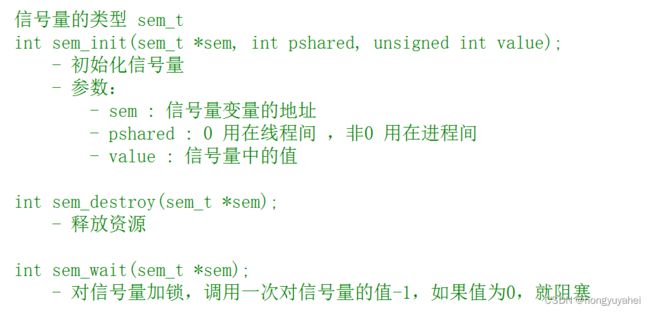
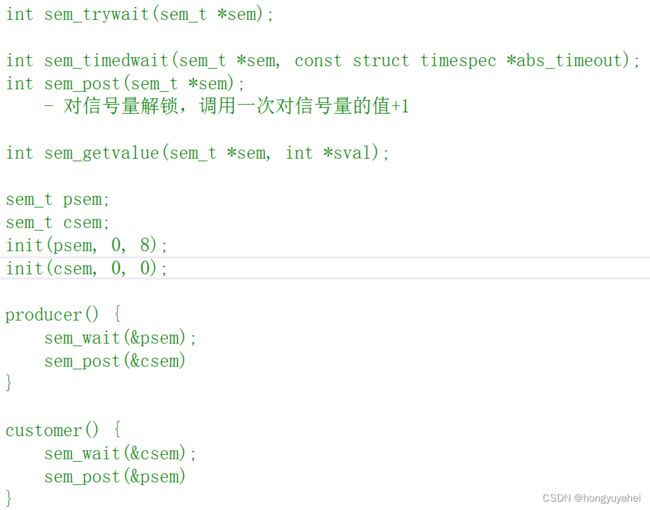
生产者信号量初始化为8,每调用一次sem_wait(&psem),生产者信号量-1,每生产一个,消费者信号量加一,当生产者信号量为0时,阻塞。
消费者部分:每调用一次sem_wait(&csem),消费者信号量-1,每消费一个,生产者信号量加一,当消费者信号量为0时,阻塞。
#include C++实现生产者消费者模型
参考佬博客如下:
https://blog.csdn.net/qq_42214953/article/details/104878720


